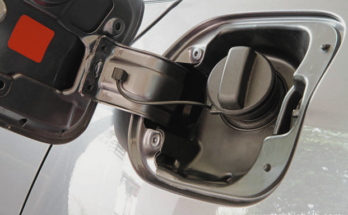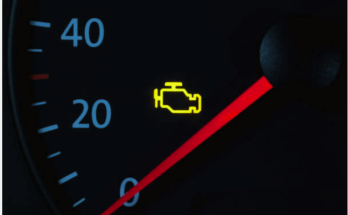When does an electrical short circuit happen?
An electrical short circuit in a car can occur when there is an unintended pathway for electrical current to flow. This typically happens when wires or components within the car’s electrical system come into contact with each other or with the vehicle’s metal frame. When this contact is made, it creates a shortcut for electricity to bypass its intended route, resulting in a short circuit.
Short circuits can happen for various reasons-
- worn or damaged wiring insulation,
- loose connections,
- or faulty components.
- accidents such as collisions or water damage can also lead to short circuits in a car’s electrical system.
When a short circuit occurs, it can cause electrical malfunctions, blown fuses, and even damage to sensitive electronic components. Identifying and addressing short circuits promptly is crucial for maintaining the safety and functionality of the vehicle’s electrical system. Regular inspection and maintenance can help prevent short circuits and ensure the smooth operation of the car’s electrical components.
See Also:-What is a Partial Zero Emission Vehicle?
What types of short circuits occur in a car?

Short circuits in cars can manifest in several ways, each with its distinct characteristics and potential consequences. But mainly Two main types of short circuits commonly occur in cars: short to ground and short to power as per Universal Diagnostic Theory.
Short to Ground in a Car
- Short to ground refers to a situation where an electrical current finds an unintended path to the vehicle’s ground or chassis. This can happen when a wire or component within the electrical system comes into contact with the metal frame of the car. When this occurs, it creates a shortcut for the electrical current to flow directly to ground, bypassing the intended circuitry. Short to ground can lead to various issues, including blown fuses, malfunctioning electrical components, and even electrical fires if left unaddressed.
Short to Power in a Car
- Short to power occurs when an electrical current bypasses its intended circuit and flows directly to a power source within the vehicle’s electrical system. This can happen when a wire or component makes contact with a power source such as the battery or alternator. Short to power can result in similar consequences as short to ground, including blown fuses, electrical malfunctions, and potential damage to sensitive electronic components.
How to test Short to Power?
- Use a multimeter set to check if there’s a direct short between suspected wires or components and the power source by measuring continuity or resistance.
- If the multimeter shows zero ohms or continuity, it signals a short to power. Continue this process until you identify the short circuit.
- Retest the circuit to confirm the short has been resolved, then reconnect the battery and verify that all electrical components are functioning pr
What are the Common Symptoms of Short Circuits?
Common symptoms of a short circuit in a car’s electrical system include
- frequent blown fuses,
- dimming or flickering lights,
- smoke or a burning odor emanating from the affected area,
- electrical malfunctions such as power windows or dashboard gauges not working properly,
- visible sparks or arcing,
- electrical system failure resulting in the inability to start the engine or operate essential functions,
- and excessive battery drainage leading to a dead battery or difficulty starting the vehicle.
See Also:-Battery Thermal Management System
Why is it important to Fix a short circuit?
Repairing a short circuit in a car is crucial for several reasons. Firstly, short circuits can pose serious safety hazards, including electrical fires, which can endanger the vehicle’s occupants and surrounding property.
Short circuits can lead to malfunctions in essential vehicle systems, such as the ignition or braking systems, compromising the car’s overall performance and reliability.
Furthermore, leaving a short circuit unaddressed can result in further damage to the car’s electrical components, leading to costly repairs down the line.
By promptly fixing a short circuit, car owners can ensure the safety of themselves and others on the road, maintain the optimal functioning of their vehicle, and avoid potentially expensive repair bills.
Regular inspection and maintenance of the car’s electrical system can help identify and address short circuits before they escalate into more significant issues.
How to Prevent Short Circuits?
Preventing short circuits in a car is essential for maintaining the safety and functionality of the vehicle’s electrical system. To achieve this, regular inspection and maintenance are crucial.
- Routinely check the car’s wiring, connectors, and components for any signs of wear, damage, or corrosion.
- Proper installation of electrical components is also key; ensure they are securely installed and insulated to prevent loose connections and exposure to external elements.
- Avoid overloading circuits by adhering to recommended electrical loads and using appropriate fuses and circuit breakers.
- Promptly address any electrical issues, such as flickering lights or blown fuses, to prevent them from escalating into short circuits.
- Weather protection is equally important; shield the electrical system from moisture and water ingress by maintaining seals and gaskets.
- When installing aftermarket electrical accessories, seek professional installation to ensure proper wiring and compatibility.
- Always use standard ampere rating fuse as per recommendation by OEM and follow wiring schematics for further details of wiring harnesses.
See Also:-How to Stop Windshield Wiper Blades from Squeaking?
What is the Cost of Diagnosing a Short Circuit?
The cost of diagnosing a short circuit in a car can vary depending on various factors such as the severity of the issue, the make and model of the vehicle, and the labor rates of the automotive repair shop.
Generally, diagnosing a short circuit involves performing electrical tests, inspecting wiring and components, and potentially using diagnostic equipment to pinpoint the exact location of the fault. As a result, diagnostic fees can range from $50 to $200 or more.
If the short circuit requires extensive troubleshooting or repair work, such as replacing damaged wiring or components, the overall cost can increase significantly. It’s essential to consult with a qualified automotive technician to accurately diagnose the short circuit and provide an estimate for the repair costs.
How do handle Short Circuits safely?
Handling short circuit wiring safely in a car is crucial to prevent accidents and further damage to the vehicle’s electrical system. Here are some tips for safely dealing with short-circuit wiring:
- Turn Off Power: Before working on any electrical wiring, make sure to turn off the power source to avoid the risk of electric shock or fire.
- Wear Protective Gear: Use insulated gloves and safety goggles to protect yourself from potential hazards while handling electrical wiring.
- Identify the Short Circuit: Use a multimeter or visual inspection to locate the short circuit in the wiring. Look for signs of damage, burning, or exposed wires.
- Isolate the Circuit: If possible, isolate the affected circuit by disconnecting it from the power source to prevent further damage or injury.
- Repair or Replace Wiring: Carefully repair or replace the damaged wiring using proper techniques and materials. Ensure all connections are secure and insulated to prevent future short circuits.
- Avoid Water Exposure: Keep the wiring and surrounding area dry to avoid the risk of electric shock or short circuits caused by moisture.
- Seek Professional Help: If you’re unsure or uncomfortable dealing with electrical wiring, seek assistance from a qualified automotive technician or electrician.
- Test Before Reconnecting: Before restoring power to the circuit, test the repaired wiring to ensure the short circuit has been resolved and that the electrical system is functioning properly.
Conclusion
Electrical short circuits in cars are serious issues that require prompt attention to prevent further damage and ensure safety. By understanding their causes, symptoms, effects, and how to deal with them safely, car owners can effectively manage short circuits and maintain the reliability of their vehicle’s electrical systems.
Electrical short circuits in cars can be complex, but with the right knowledge and precautions, they can be effectively managed. Stay informed, stay safe, and keep your car running smoothly on the road.




